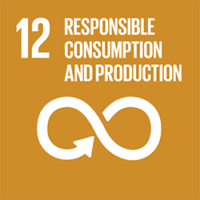Ensure sustainable consumption and production patterns
If the global population reaches 9.8 billion by 2050, the equivalent of almost three planets will be required to provide the natural resources needed to sustain current lifestyles.Global crises triggered a resurgence in fossil fuel subsidies, nearly doubling from 2020 to 2021.In 2021, governments spent an estimated $732 billion on subsidies for coal, oil and gas, nearly doubling the $375 billion spent in 2020.In 2021, although 828 million people were facing hunger, 13.2 per cent of the world’s food was lost after harvest along the supply chain from farm to consumer.The trend towards sustainability reporting is on the rise, with around 70 per cent of monitored companies publishing sustainability reports in 2021.In 2022, 67 national governments reported to the United Nations Environment Programme on the implementation of sustainable public procurement policies and action plans, a 50 per cent increase from 2020.Support should be provided to developing countries to move towards more sustainable patterns of consumption by 2030
Outreach Programs
SDG Goals
- 01 – No Poverty
- 02 – Zero Hunger
- 03 – Good Health and Well-being
- 04 – Quality Education
- 05 – Gender Equality
- 06 – Clean Water and Sanitation
- 07 – Affordable and Clean Energy
- 08 – Decent Work and Economic Growth
- 09 – Industry, Innovation and Infrastructure
- 10 – Reduced Inequalities
- 11 – Sustainable Cities and Communities
- 12 – Responsible Consumption and Production
- 13 – Climate Action
- 14 – Life below Water
- 15 – Life on Land
- 16 – Peace, Justice and Strong Institutions
- 17 – Partnerships for the Goals
















